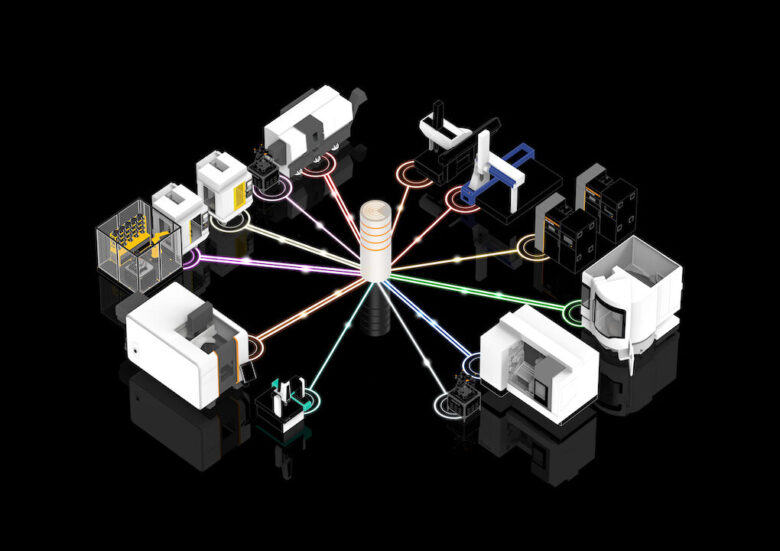Digital manufacturing is part of an intricate web that’s transforming global industries. Here’s a look at some of the most-read digital manufacturing articles of 2023 on Make Parts Fast and a few worthwhile reads.
How is 3D printing used in 2023? Here’s what’s changing
Jabil conducted a global survey of additive manufacturing decision-makers, and the findings reinforce the steady ascent of 3D printing technologies and additive materials into production environments. Since 2017, Jabil has conducted this biennial survey to trace the trajectory of additive manufacturing while identifying the most promising opportunities and lingering challenges facing decision-makers. The latest survey results reveal the continued adoption of 3D printing in production environments despite ongoing roadblocks with the cost and availability of additive materials. Read this →

Salzburg hospital creates PEEK cranial implant with 3D Systems’ technology
The University Hospital of Salzburg in Austria successfully designed and produced its first 3D-printed polyetheretherketone (PEEK) cranial implant using 3D Systems’ point-of-care additive manufacturing technologies. The hospital used Oqton’s D2P software to create 3D models from the patient’s CT images and Oqton’s Geomagic Freeform to complete the design of the patient-specific occipital prosthesis. The cranial implant was printed using Vestakeep i4 3DF PEEK by Evonik on 3D Systems’ Kumovis R1 extrusion platform. Read this →

Berkeley space team has “Eureka” moment with 3D printing
The Space Enterprise Berkeley (SEB) team successfully launched their first-ever liquid-fueled rocket, Eureka-1, which reached 11,024 ft in December last year. The collegiate team partnered with Protolabs to create parts for Eureka-1’s plenum and complex parachute system using selective laser sintering (SLS). Read this →

Move over AI: Machine shops pave digital journeys with actionable data
As manufacturers seek more unified operations with greater visibility, many jump at the chance to gather data only to find themselves buried in meaningless and costly information. Renishaw Central aims to capture the right information and reveal hidden machine data that improves process control and quality. Read this →

Prototyping the Gutsy Port, an empowering solution for ostomates
Charlotte Böhning, an industrial designer in Brooklyn, New York, recognized the need and desire for ostomates to gain more autonomy and control over their stomas and even have bag-free moments. She decided to explore alternate solutions and went through many prototyping phases with low-fidelity materials, such as cardboard, chipboard, and plasticine, to see what potential parts and wearables could look like. After consulting with ostomates worldwide on shape and form, she moved to 3D printing for more high-fidelity models. Read this →

US Navy installs on board the first Phillips Additive Hybrid metal 3D printing solution
Meltio and Phillips Corporation have worked together to install for the first time on a U.S. Navy ship a metal 3D printing solution for the onboard manufacture of spare parts and repairs. The Phillips Additive Hybrid powered by Haas took the laser metal deposition technology of Meltio and integrated it with the world-renowned Haas CNC vertical machining centers control mill onboard the USS Bataan ship. Read this →

Sculpteo offers Re-cycleo program to reuse nylon materials for 3D printing
Sculpteo unveiled the 8th edition of the “State of 3D Printing” in November 2022 to support companies in sustainability efforts. Now, the 3D printing company offers Re-cycleo, a new recycling program for parts printed with Nylon PA12 and Nylon PA11. The recycled material will be used in the plastics industry and give a second life to the old parts that can be recycled as many times as possible. Read this →

Trends in digital manufacturing
The convergence of software, cloud computing, and additive manufacturing (3D printing) technologies has given manufacturers the ability to cost-effectively supply millions, thousands, or dozens of a given workpiece — and even batch sizes down to one. It’s no wonder that worldwide, batch sizes have in fact shrunk‚ catering to increased demand for customized products‚ and additive manufacturing has played a role in this trend. To be clear, this has vaulted additive manufacturing into a realm far beyond its hobbyist and rapid-prototyping origins. For the 2023 Design World Trends issue, the editors asked industry experts to comment on these digital-manufacturing developments. Here’s what the sources had to say. Read this →

Webinar recap: Scaling your business with additive manufacturing
Additive technologies throw a wrench in traditional manufacturing but can save millions of dollars and minutes down the line. Still, many organizations hesitate and view 3D printing anything besides prototypes as costly and unnecessary. Maybe it’s time to think differently and more creatively. Read this →

3D printing’s future is limitless, if we embrace open materials
Imagine you’re an apparel manufacturer. You need machines to make your clothes. But the machines you can buy will only make clothes out of fabrics sold by the companies that sell the machines. You can’t use cotton, wool, or polyester. You have to use the custom fabrics sold by the machine maker. It sounds ridiculous. But in the world of additive manufacturing, it’s a reality. Read this →

Stay tuned in 2024 for more digital manufacturing articles!
Filed Under: Make Parts Fast




